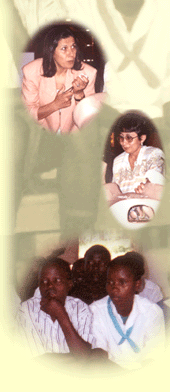
The Global Need for Postabortion Care
Each year, millions of women in developing countries suffer serious
infection, chronic pain and infertility due to complications after
miscarriages or unsafe abortions; an estimated 80,000 of these women die, and
many others are left with permanently compromised health. Mortality is highest
in Africa, where the estimated risk of death from unsafe abortion is 1 in 150
(as opposed to 1 in 3,700 in developed countries). In some
countries—Kenya and Uganda, for example—hospital-based studies find that more than one-third of all maternal deaths result from postabortion complications. Unsafe abortion is estimated to cause one-quarter of all maternal deaths in Latin America and account for 12% of maternal deaths in Asia, where more than 9 million unsafe abortions occur annually. The number of reported deaths worldwide would be dramatically higher if it included the legions of women and adolescent girls who never make it to a hospital, who die at home far from hospital care. Making matters worse, each maternal death affects the well-being of a family and community, often compromising the health of now motherless young children.
|











